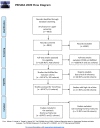Treatment of humerus fractures in the elderly: A systematic review covering effectiveness, safety, economic aspects and evolution of practice
- PMID: 30543644
- PMCID: PMC6292626
- DOI: 10.1371/journal.pone.0207815
Treatment of humerus fractures in the elderly: A systematic review covering effectiveness, safety, economic aspects and evolution of practice
Abstract
Objectives: The objective of this Health Technology Assessment was to evaluate effectiveness, complications and cost-effectiveness of surgical or non-surgical treatment for proximal, diaphyseal or distal fractures of the humerus in elderly patients. Secondary objectives were to evaluate the intervention costs per treatment of proximal humerus fractures (PHF) and to investigate treatment traditions of PHF in Sweden.
Methods and findings: The assessment contains a systematic review of clinical and health economic studies comparing treatment options for humerus fractures in elderly patients. The results regarding the effectiveness of treatments are summarized in meta-analyses. The assessment also includes a cost analysis for treatment options and an analysis of registry data of PHF. For hemiarthroplasty (HA) and non-operative treatment, there was no clinically important difference for moderately displaced PHF at one-year follow-up regarding patient rated outcomes, (standardized mean difference [SMD]) -0.17 (95% CI: -0.56; 0.23). The intervention cost for HA was at least USD 5500 higher than non-surgical treatment. The trend in Sweden is that surgical treatment of PHF is increasing. When functional outcome of percutaneous fixation/plate fixation/prosthesis surgery and non-surgical treatment was compared for PHF there were no clinically relevant differences, SMD -0.05 (95% CI: -0.26; 0.15). There was not enough data for interpretation of quality of life or complications. Evidence was scarce regarding comparisons of different surgical options for humerus fracture treatment. The cost of plate fixation of a PHF was at least USD 3900 higher than non-surgical treatment, costs for complications excluded. In Sweden the incidence of plate fixation of PHF increased between 2005 and 2011.
Conclusions: There is moderate/low certainty of evidence that surgical treatment of moderately displaced PHF in elderly patients has not been proven to be superior to less costly non-surgical treatment options. Further research of humerus fractures is likely to have an important impact.
Conflict of interest statement
The authors have declared that no competing interests exist.
Figures










References
-
- Court-Brown CM, Caesar B. Epidemiology of adult fractures: A review. Injury. 2006;37(8):691–7. Epub 2006/07/04. 10.1016/j.injury.2006.04.130 . - DOI - PubMed
-
- Kim SH, Szabo RM, Marder RA. Epidemiology of humerus fractures in the United States: nationwide emergency department sample, 2008. Arthritis care & research. 2012;64(3):407–14. Epub 2011/12/14. 10.1002/acr.21563 . - DOI - PubMed
-
- Palvanen M, Kannus P, Niemi S, Parkkari J. Update in the epidemiology of proximal humeral fractures. Clinical orthopaedics and related research. 2006;442:87–92. Epub 2006/01/06. . - PubMed
-
- Launonen AP, Lepola V, Flinkkila T, Laitinen M, Paavola M, Malmivaara A. Treatment of proximal humerus fractures in the elderly: a systemic review of 409 patients. Acta orthopaedica. 2015;86(3):280–5. Epub 2015/01/13. 10.3109/17453674.2014.999299 ; PubMed Central PMCID: PMCPMC4443467. - DOI - PMC - PubMed
-
- Sarmiento A, Zagorski JB, Zych GA, Latta LL, Capps CA. Functional bracing for the treatment of fractures of the humeral diaphysis. The Journal of bone and joint surgery American volume. 2000;82(4):478–86. Epub 2000/04/13. . - PubMed
Publication types
MeSH terms
LinkOut - more resources
Full Text Sources
Medical

